I’ve Found Natural Beauty In 10 Serene Destinations + 5 That Lost Their Charm To Mass Tourism
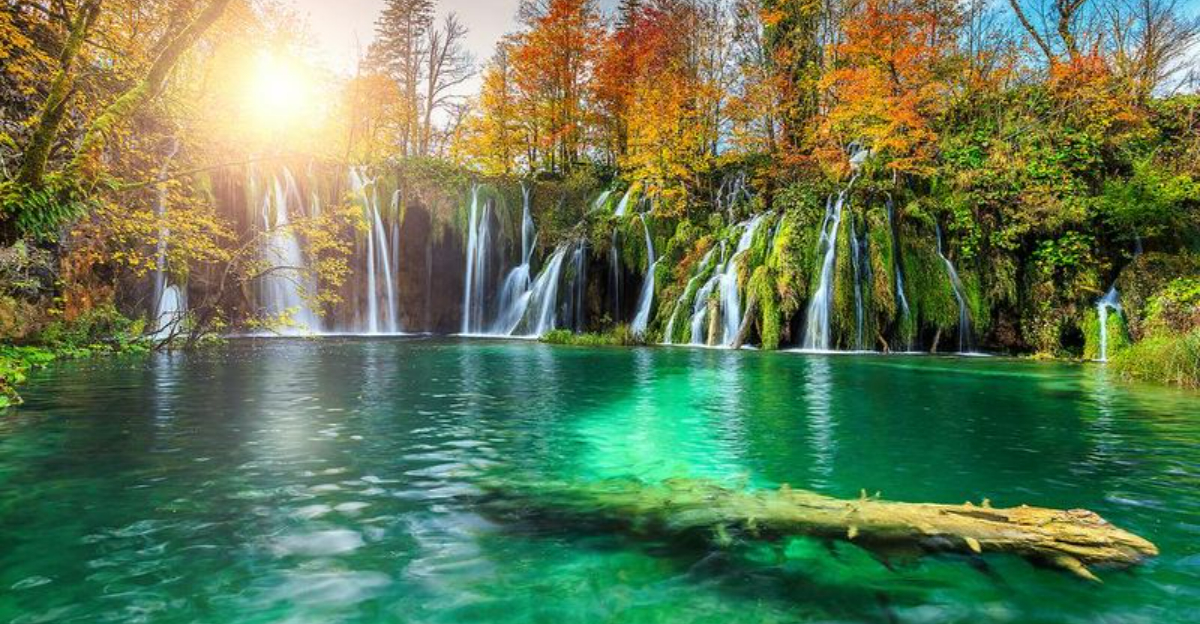
Traveling has always been my passion, especially when it comes to discovering natural wonders around the world. I’ve been lucky enough to witness some truly breathtaking landscapes that remain untouched by the masses. At the same time, I’ve watched other once-pristine places become victims of their own popularity.
Here’s my personal journey through paradise found and paradise compromised.
1. Faroe Islands: Untamed Atlantic Majesty

Wind-swept and raw, these 18 volcanic islands between Iceland and Norway captured my heart instantly. Dramatic cliffs plunge hundreds of feet into the churning Atlantic while sheep graze peacefully on impossibly green slopes.
Villages with grass-roofed houses nestle in protective valleys, seemingly unchanged for centuries. During my visit, I hiked to Sørvágsvatn, the optical illusion lake that appears to hover above the ocean. The islands’ remoteness has preserved their authentic culture and landscapes, though whispers of increased tourism have begun.
2. Banff National Park: Canadian Rockies Perfection
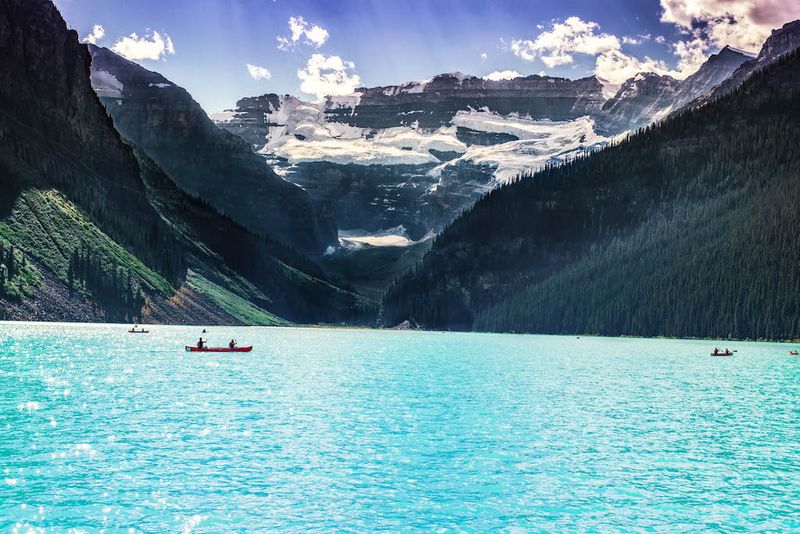
If heaven were a place on Earth, it might look like Banff. My first glimpse of Lake Louise’s turquoise waters against snow-capped mountains literally took my breath away. Wildlife encounters happen naturally here – I spotted elk grazing near town and a black bear ambling through wildflower meadows.
The drive along Icefields Parkway reveals one spectacular vista after another. Though popular, Banff’s vast wilderness means solitude is always possible on less-traveled trails like those around Sunshine Meadows or Bow Lake.
3. Azores: Portugal’s Secret Eden
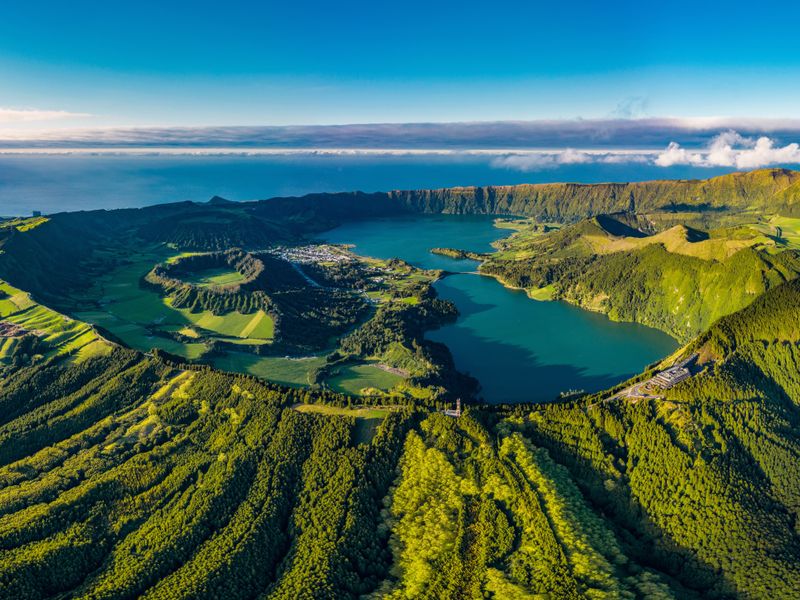
Halfway between America and Europe lie nine volcanic islands that feel like the world’s best-kept secret. On São Miguel, I bathed in natural hot springs surrounded by tropical plants and hiked around crater lakes painted in shades of blue and green.
The landscape shifts dramatically from black sand beaches to lush calderas to tea plantations. Locals still cook traditional cozido stew using volcanic steam from the ground. Though tourism is growing, sustainable practices are prioritized, and the islands maintain their wild, authentic character.
4. Plitvice Lakes: Croatia’s Cascading Wonderland

Walking through Plitvice feels like stepping into a fairy tale. The wooden pathways wind through 16 terraced lakes connected by waterfalls that seem to flow from nowhere. Morning mist creates an ethereal atmosphere as sunlight filters through beech and fir trees.
I spent hours mesmerized by the crystal-clear turquoise waters that change color throughout the day. Despite growing visitor numbers, the park’s size allows you to find solitude if you venture beyond the main trails early in the day.
5. Isle of Skye: Scotland’s Mystical Peninsula
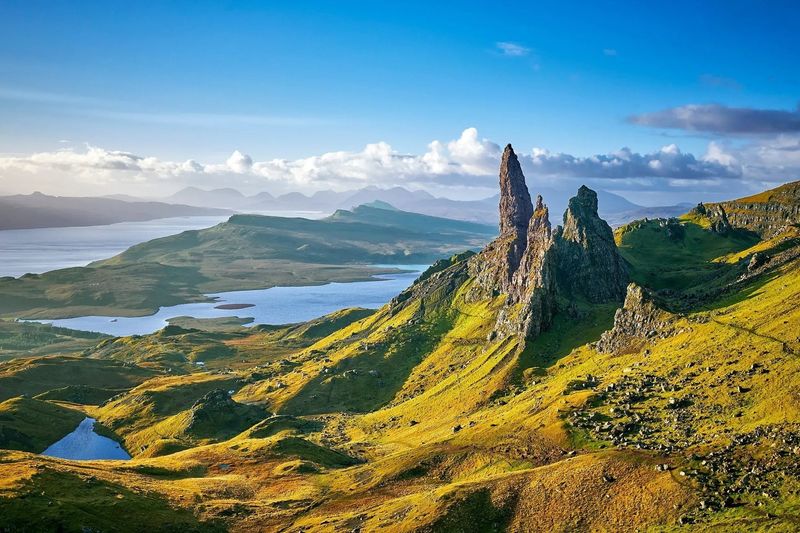
Mist-shrouded mountains rise from the sea on this island where legends feel as real as the rocky landscape. My hike to the Old Man of Storr revealed otherworldly rock formations piercing through clouds. The Fairy Pools’ crystal waters tumble down from the Black Cuillins, creating natural swimming spots for the brave-hearted.
Skye’s changeable weather creates dramatic light that photographers dream about. Ancient castles and crofters’ cottages dot the landscape, telling stories of clan battles and highland life that still echo across the heather.
6. Lofoten Islands: Norway’s Arctic Paradise

Red fishing cabins (rorbuer) perch on stilts above crystal waters, framed by jagged mountain peaks that rise directly from the sea. During summer, I experienced the midnight sun illuminating this Arctic archipelago with golden light for 24 hours.
Hiking across Moskenesøya revealed empty beaches with sand white enough to rival the Caribbean. The water clarity allowed me to see straight to the bottom despite the chilly temperatures. Winter brings the northern lights dancing across star-filled skies, creating nature’s most spectacular light show.
7. Lake Bohinj: Slovenia’s Tranquil Mountain Gem
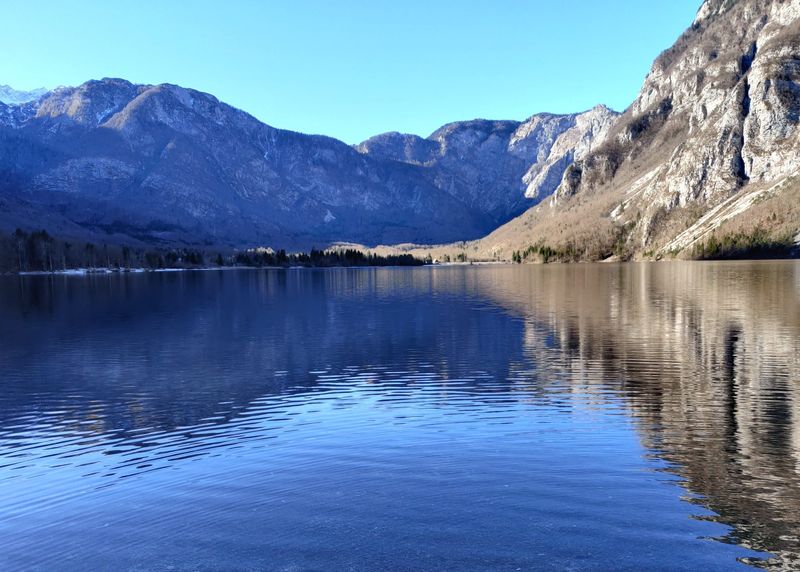
Hidden in Triglav National Park lies a pristine alpine lake that makes nearby Lake Bled seem overcrowded. My mornings at Bohinj began with mist rising off glassy waters that perfectly mirrored the Julian Alps. Wild swimming in the crystal-clear waters became a daily ritual, followed by forest hikes to thundering Savica waterfall.
The silence here is profound – broken only by cowbells from nearby meadows and the occasional splash of a fish. Traditional hayracks dot emerald meadows around the lake, preserving agricultural traditions that stretch back centuries.
8. Aoraki/Mount Cook: New Zealand’s Alpine Sanctuary
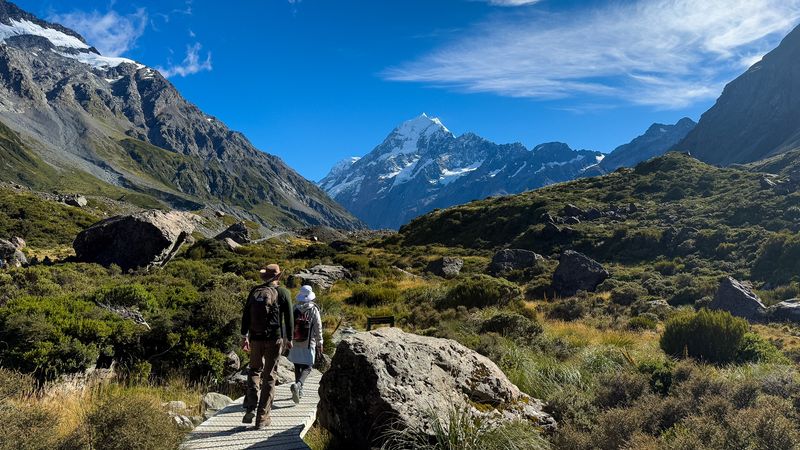
Standing beneath New Zealand’s highest peak, I felt wonderfully insignificant. The Hooker Valley track led me alongside glacial rivers and across swing bridges to a lake dotted with icebergs calved from ancient glaciers.
Night skies here reveal the Milky Way with clarity that made me gasp – part of the world’s largest Dark Sky Reserve. Alpine flowers carpet meadows with delicate blooms during summer months. Though visitor numbers grow yearly, the remote location and commitment to conservation have maintained Mount Cook’s wilderness feel and spiritual significance to Māori people.
9. Jasper National Park: Canada’s Wild Frontier
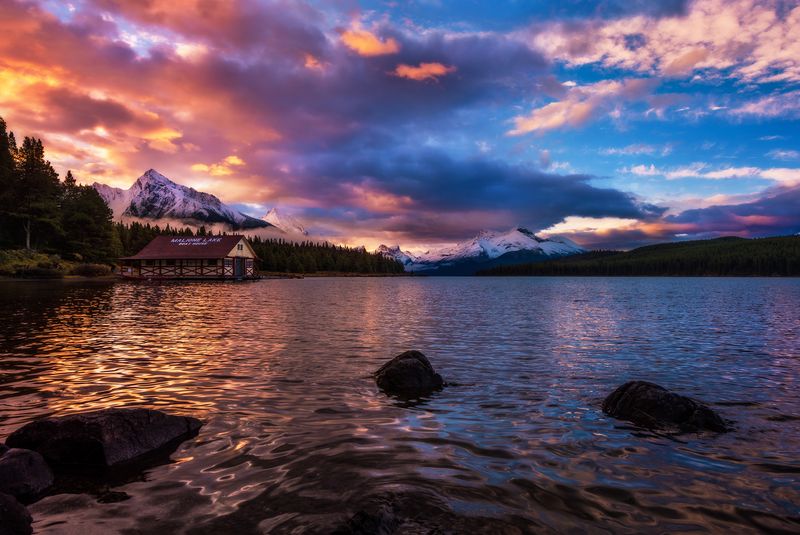
Less famous than its southern neighbor Banff, Jasper offers similar grandeur with a fraction of the crowds. Watching sunrise at Maligne Lake, I saw the mountains turn pink while a moose and her calf waded in the shallows.
Hiking through alpine meadows covered in wildflowers led to viewpoints where glacier-fed rivers cut through valleys. The Icefields Parkway connects these parks with what might be the world’s most scenic drive. Dark sky initiatives protect some of North America’s clearest night viewing, where stars and northern lights dance above jagged peaks.
10. Madeira: Portugal’s Floating Garden

This volcanic island rising from the Atlantic defies expectations with its dramatic landscapes. Hiking along levadas (irrigation channels) took me through laurel forests so ancient they’re UNESCO protected, with waterfalls cascading alongside narrow paths.
Terraced farms cling to impossibly steep hillsides, while coastal cliffs plunge thousands of feet to the sea. My favorite discovery was swimming in natural lava pools at Porto Moniz, where Atlantic waves crash just feet away. Despite being a centuries-old destination, many parts of Madeira remain wonderfully undeveloped and wild.
11. Bali: Paradise Buried Under Tourist Hordes
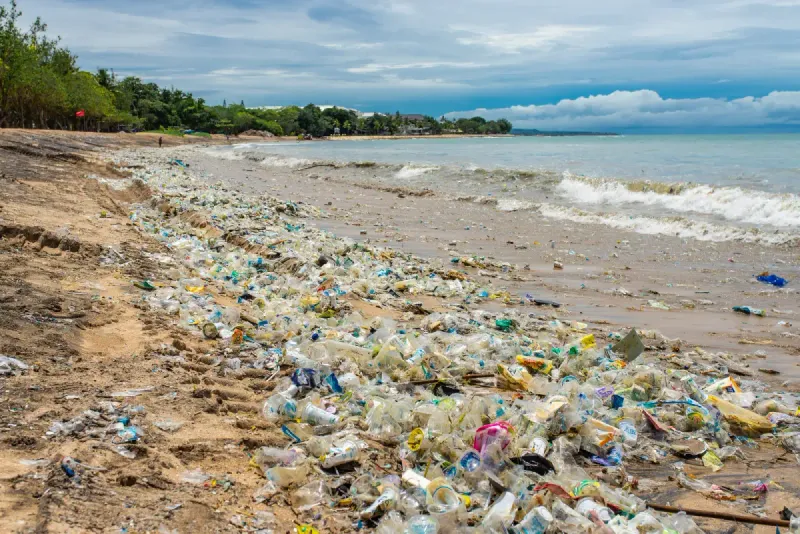
Twenty years ago, Bali cast a spell on me with its terraced rice fields, spiritual ceremonies, and empty beaches. Returning recently was heartbreaking. Ubud, once a cultural haven, now resembles a theme park with traffic jams and selfie spots.
Instagram-famous sites like Tegallalang rice terraces have viewing platforms and entrance fees, with locals dressed in traditional attire charging for photos. Beach clubs in Seminyak pump music while plastic washes ashore. The authentic Bali still exists in remote corners, but requires effort to find beneath layers of commercialization.
12. Santorini: Greek Island Crushed by Cruise Ships
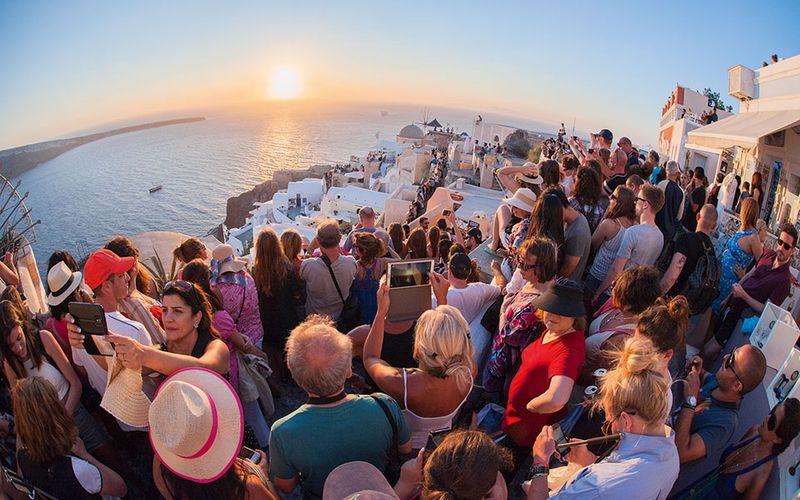
Those famous blue-domed churches against whitewashed buildings still exist, but now you’ll battle hundreds of tourists for the same photo angle. My recent visit revealed a Santorini struggling under its own popularity. Cruise ships disgorge up to 15,000 daily visitors onto an island barely 30 square miles.
Narrow streets in Oia become impassable by afternoon, while sunset viewpoints resemble concert crowds rather than romantic vistas. Prices have skyrocketed as traditional homes convert to luxury accommodations, pushing locals out and creating a beautiful but increasingly hollow experience.
13. Maya Bay: Thailand’s Paradise Sacrificed
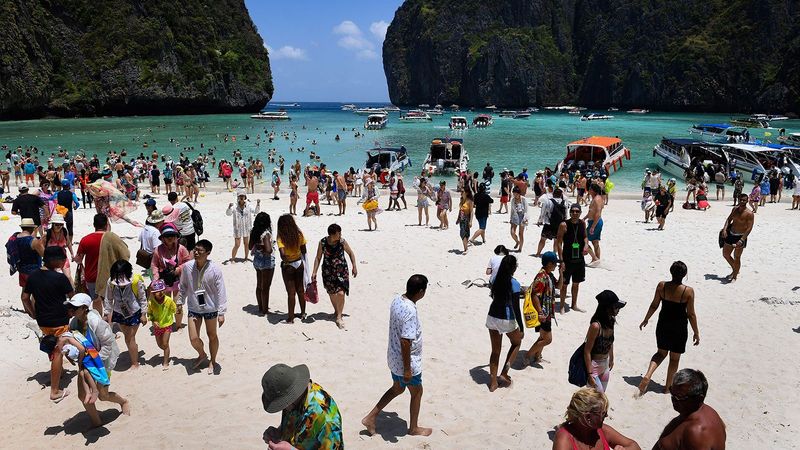
Made famous by Leonardo DiCaprio’s film “The Beach,” this once-pristine cove on Phi Phi Leh island became a cautionary tale of tourism gone wrong. Before its closure in 2018, I witnessed firsthand the devastating impact.
Hundreds of boats would arrive daily, their anchors destroying coral reefs while thousands of tourists trampled sensitive beach ecosystems. Trash littered the famous turquoise waters, and sunscreen created an oily film on the surface. Though now reopened with strict visitor limits, much damage remains irreversible – a sobering reminder of nature’s fragility against human desire.
14. Hallstatt: Austrian Village Turned Chinese Replica
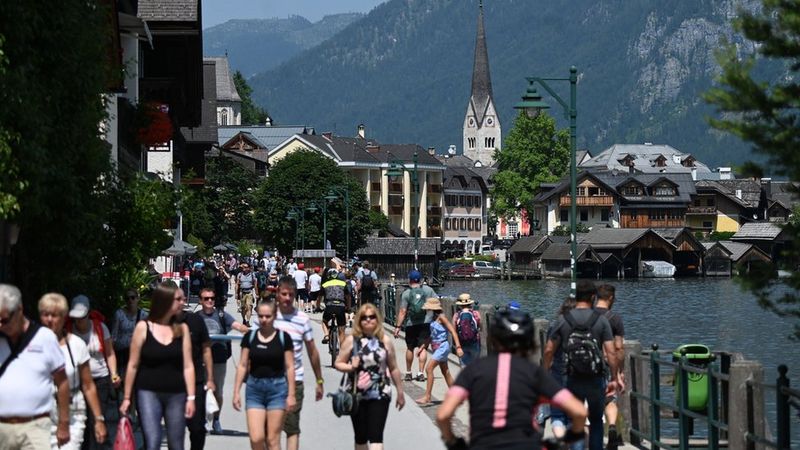
This tiny lakeside village nestled between mountains became an overnight sensation after appearing in Asian travel blogs. The population of 800 now hosts over a million visitors annually, with tour buses arriving hourly. Walking the single main street means shuffling through crowds taking identical photos of pastel buildings.
Residents have installed curtains and signs begging for privacy as tourists peer and photograph into their homes. China even built an exact replica of Hallstatt, completing the transformation from living community to real-life theme park. The authentic Alpine culture that made it special has largely disappeared.
15. Dubrovnik: Game of Thrones’ Victim
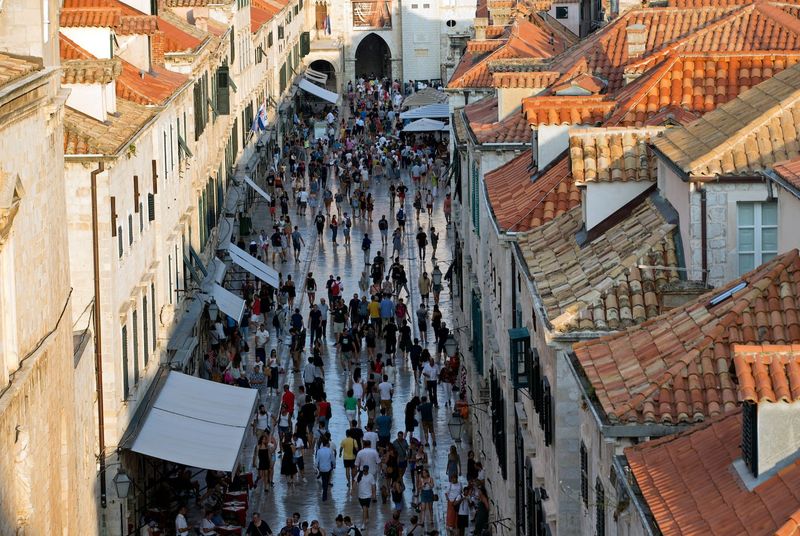
When HBO chose Dubrovnik as King’s Landing for Game of Thrones, they inadvertently sealed its fate. The ancient walled city now suffers from what locals call “overtourism” at its worst. Summer brings cruise ships that sometimes triple the Old Town’s population within hours.
Walking the famous walls means shuffling in a human chain rather than appreciating medieval architecture. Themed tours crowd narrow streets while souvenir shops replace traditional businesses. Housing has become unaffordable for locals as apartments convert to vacation rentals, hollowing out the very community that preserved this gem for centuries.
